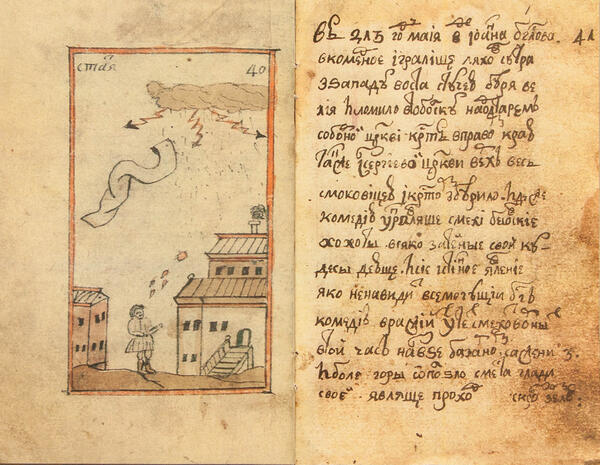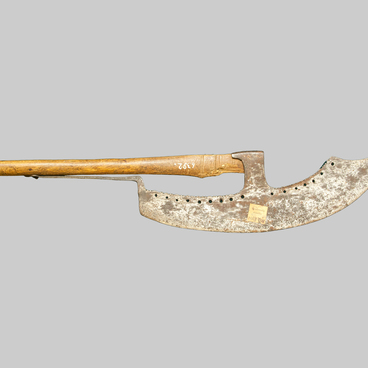The manuscript is a diary records about the phenomena seen by an unknown author in the sky over the city of Tobolsk in the early 18th century. It is known that they were kept in 1696 by order of the Tobolsk voivode Andrey Fyodorovich Naryshkin. Not all the pages of the chronicle have survived to our days, there are 111 pages in the book of the mid 18th century – from 26 to 148.
The chronicler clearly, carefully and correctly recorded observations of the sky. This written monument consists of two parts: there is a detailed description of the astronomical phenomenon that the author observed, on the spreadsheet of the book on the right side of most pages. And on the left side — a graphic drawing with partial comments about the location of the stars and planets of the solar system, the trajectory of the meteorite hit, a fragment of a solar eclipse, and so on. Such presentation of the material clearly, reliably and convincingly states the pictures seen in the night sky.
The entire text is also divided into logical parts. Each paragraph starts on a new page and contains information about a celestial phenomenon. Although the paragraphs are not titled, they have an opening sequence, which usually begins a fragment of diary records. The author dated each new celestial phenomenon: he indicated the date and time of the fact described.
The chronicle consists of brief notes and drawings relating to various events, such as phenomena related to changes in the weather, urban accidents, fires, urban development progress and so forth. The author explains many events and incidents by the intervention of the celestial powers, to explain the particular incidents, the author of the chronicle has made instructions to the celestial signs and wonders as a manifestation of the miraculous or diabolical forces: for example, the cloud carried by the ‘serpent’ over the Irtysh caused a fire in the city, and the wrath of God sent a thunderstorm to the earth.
‘Record of astronomical phenomena’ belongs to the original genre of old Russian script, similar to notebooks, salary and census books, diaries, in the form of presentation of material, that recorded events that took place in the country and city.
The chronicler clearly, carefully and correctly recorded observations of the sky. This written monument consists of two parts: there is a detailed description of the astronomical phenomenon that the author observed, on the spreadsheet of the book on the right side of most pages. And on the left side — a graphic drawing with partial comments about the location of the stars and planets of the solar system, the trajectory of the meteorite hit, a fragment of a solar eclipse, and so on. Such presentation of the material clearly, reliably and convincingly states the pictures seen in the night sky.
The entire text is also divided into logical parts. Each paragraph starts on a new page and contains information about a celestial phenomenon. Although the paragraphs are not titled, they have an opening sequence, which usually begins a fragment of diary records. The author dated each new celestial phenomenon: he indicated the date and time of the fact described.
The chronicle consists of brief notes and drawings relating to various events, such as phenomena related to changes in the weather, urban accidents, fires, urban development progress and so forth. The author explains many events and incidents by the intervention of the celestial powers, to explain the particular incidents, the author of the chronicle has made instructions to the celestial signs and wonders as a manifestation of the miraculous or diabolical forces: for example, the cloud carried by the ‘serpent’ over the Irtysh caused a fire in the city, and the wrath of God sent a thunderstorm to the earth.
‘Record of astronomical phenomena’ belongs to the original genre of old Russian script, similar to notebooks, salary and census books, diaries, in the form of presentation of material, that recorded events that took place in the country and city.



